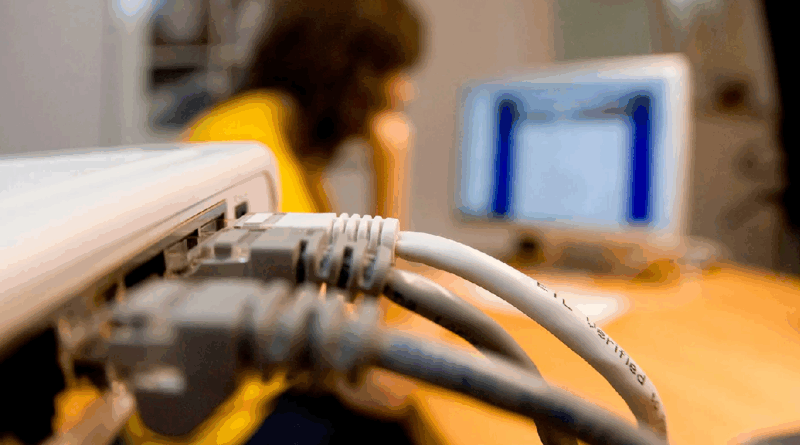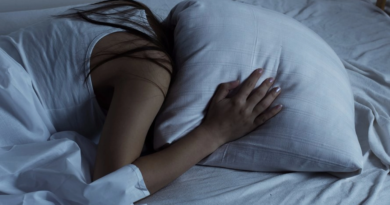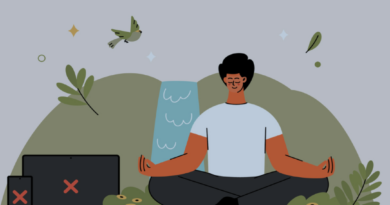Disconnecting from Technology: The Surprising Shortcut to Deeper, Happier Relationships
Disconnecting from technology can feel almost impossible when work, friends, and entertainment all live inside glowing rectangles. Yet the same devices that keep us “connected” often pry us apart from the very people sitting next to us.
Ask yourself: When was the last time you enjoyed a long conversation without glancing at a screen? If you had to think, you are not alone. Today, the average adult checks a smartphone 96 times a day—roughly every 10 minutes. Constant pings fracture attention, shorten patience, and make eye contact rare. In the pages ahead, youʼll learn why unplugging—even briefly—pays outsized dividends for romance, friendship, and family life. Expect science‑backed insights, practical tactics you can start tonight, and a step‑by‑step detox plan designed for real‑world schedules.
Table of Contents
Disconnecting from Technology: Why Relationships Are Feeling the Strain
Digital connection does not automatically translate into emotional connection. Researchers have linked heavy screen use to lower relationship satisfaction, reduced empathy, and more arguments. One 2016 study in Computers in Human Behavior found that partners who “phub” (phone‑snub) each other report significantly more conflict and less overall happiness in the relationship. A 2024 Michigan State University extension brief echoes that finding, noting that excessive screen time fuels miscommunication and emotional disconnection between significant others.
How constant notifications hijack attention
Every buzz triggers a hit of dopamine, priming the brain to crave the next alert. Over time, the anticipation loop becomes so strong that partial attention becomes the default. The problem is not simply distraction; it’s displacement. Moments that could nurture intimacy, like walking the dog or cooking dinner, become opportunities to scroll.
The silent erosion of empathy
Eye contact activates mirror neurons that help us read subtle emotional cues. Looking down at a screen interrupts this feedback loop, dulling our ability to notice minor shifts in tone or body language. Over months or years, partners may feel “unseen” even while living together.
Red Flags—How to Tell Your Devices Are Undermining Your Bond
Modern life normalizes behaviors that, a decade ago, might have seemed rude. Spotting trouble early is easier than repairing damage later.
1. “Phubbing” your partner becomes routine
If your phone lives on the table during meals and you quickly scan it the moment a message arrives, that micro‑dismissal registers with loved ones—even if they never mention it. In surveys, 70 % of adults say they feel hurt when ignored for a device.
2. Conversations have shrunk to logistics
Compare the richness of your chats five years ago to today. If exchanges are mostly about schedules, bills, or who’s picking up groceries, digital crowd‑out may be stealing depth.
3. Parallel scrolling in bed
Couples used to debrief before sleep. Now, blue screens cast twin glows on the ceiling. Poor sleep and diminished intimacy often follow.
4. Kids complain you’re “always on your phone”
Children read emotional availability through face‑to‑face engagement. When parental eyes flick away, kids mirror the same behavior with peers.
The Proven Upside of Unplugging (Backed by Science)
Unplugging is not nostalgia—it’s evidence‑based self‑care. A 2023 systematic review of digital detox interventions reported significant improvements in life satisfaction and stress reduction after as little as 72 hours offline. Another study of 5,400 young adults linked heavy dating‑app use to higher anxiety about rejection and poorer real‑world social skills. Below are the biggest wins you can expect.
Higher relationship satisfaction
Couples who instituted device‑free dinners for just two weeks reported a 33 % jump in perceived closeness.
Sharper empathy and listening skills
Without the temptation to multitask, you notice micro‑expressions and emotional shifts that once slipped by. Yale researchers have shown that less screen media correlates with stronger mental‑health outcomes, partly because people lean on face‑to‑face support instead.
Better sleep and physical health
Blue‑light exposure delays melatonin release, making it harder to fall asleep. Removing screens at least an hour before bed shortens sleep‑onset latency by up to 30 minutes. More sleep equals better mood regulation and fewer arguments.
A Practical 7‑Day Digital Detox Plan You Can Stick To
Goal: Rebuild healthy tech boundaries without quitting your job or going off‑grid.
Preparation (the night before Day 1)
- Pick your “why.” A clear reason—feeling closer to your spouse, being more present with kids, regaining focus—keeps motivation high.
- Tell your circle. Let friends and colleagues know you may respond more slowly.
- Audit your devices. Note average screen time per app (Settings ▸ Screen Time on iOS; Digital Wellbeing on Android).
Day 1: Device‑Free Dinner
- Declare the dining table a phone‑free zone. Use a bowl or box to hold devices.
- Conversation cue: “What was the highlight of your day?”
Day 2: Curate Notifications
- Disable non‑essential push alerts (news flashes, game invites).
- Keep critical work and family channels only.
Day 3: One‑Screen Evening
- Choose either TV or phone, not both. Multiscreening fragments focus.
- Replace secondary scrolling with a joint activity—board game, walk, or planning a trip.
Day 4: Social‑Media Sunset
- Log out of social apps at 7 p.m. Install app blockers if needed.
Day 5: 30‑Minute Morning Delay
- Wait 30 minutes after waking before checking any device.
- Use that pocket to stretch, journal, or share a coffee chat.
Day 6: Outdoor Hour
- Spend at least 60 minutes outside without phones. Nature resets overstimulated brains.
Day 7: Reflection & Reset
- Compare new screen‑time stats with Day 0.
- Ask each other: What felt easiest? Hardest? What do we keep?
Even partial compliance delivers noticeable improvements. Adjust the timeline to fit shift work, parenting, or caregiving duties.
Making Tech Boundaries Stick for the Long Haul
Short detoxes lose power if old habits return. Embed friction to help future‑you.
Establish device‑free zones
- Bedroom: Replace phone alarm with a $10 analog clock.
- Table: Eating is social glue; protect it.
- Car: Hands‑free calls only; passengers can map or DJ.
Schedule intentional screen time
Block calendar windows for email or social browsing. When the slot closes, so does the app. Structured use reduces the urge to graze.
Leverage grayscale mode
Turning displays to grayscale strips apps of the candy‑colored lure, decreasing impulsive checks by up to 37 % in experimental trials.
Use shared hobbies as “replacement dopamine.”
Cooking new recipes, jogging together, or learning a language supplies the novelty hit once provided by doom‑scrolling.
Create accountability rituals
- Sunday night: Review weekly screen reports as a couple or family.
- First of the month: Vote on one new experience (picnic, class, weekend trip) funded by money saved on in‑app purchases or streaming subs.
Frequently Asked Questions (and Straight Answers)
What if my job requires constant connectivity?
Negotiate “focus blocks.” Let teammates know that between 10 a.m. and noon, you mute Slack for deep work and critical relationship health. Offer an alternative contact (a desk phone) for emergencies.
Won’t I miss important news?
Set up a single 15‑minute “news catch‑up” in the evening. Studies show most breaking alerts do not require immediate action, but do spike cortisol.
How do I involve children without meltdowns?
Let kids help set the rules. Rotate who chooses the nightly family activity. Reward reduced screen time with experiences, not sugar.
Is a total digital detox realistic long term?
Probably not. Think of disconnection as a spectrum. Even shaving 90 minutes of daily screen time frees 10½ hours a week—time enough for a date night and two gym sessions.
Key Takeaways
- Heavy screen use quietly erodes empathy and satisfaction by stealing attention from the people who matter most.
- Brief, strategic breaks—starting with a phone‑free dinner—restore connection faster than you might expect.
- A 7‑day structured detox can cut screen time by 20–40 % and boost relationship happiness by one‑third.
- Long‑term success depends on device‑free zones, scheduled screen blocks, and shared offline hobbies.
References
- Mark Travers. “3 Ways a Digital Detox Could Save Your Relationship—By a Psychologist.” Forbes, Nov 15 2024. (forbes.com)
- Michigan State University Extension. “Effects of Excessive Screen Time on Adults’ Relationships,” Feb 2025. (canr.msu.edu)
- Naomi P. et al. “Impacts of Digital Social Media Detox for Mental Health: A Systematic Review.” International Journal of Environmental Research and Public Health, 2024. (pmc.ncbi.nlm.nih.gov)
- Meredith L. David & James A. Roberts. “Phubbed and Alone: Phone Snubbing, Social Exclusion, and Attachment Style.” Computers in Human Behavior, 2016. (forbes.com)
- Wildflower Counseling. “The Power of a Digital Detox for Revitalizing Your Relationships,” Jan 2025. (wildflowerllc.com)
- Yale School of Medicine. “Study Probes Connection Between Excessive Screen Media Activity and Mental Health Problems in Youth,” Mar 21 2023. (medicine.yale.edu)
- Kuss, D. et al. “Screen Time and Emotional Symptoms in Children.” Journal of Affective Disorders, 2025. (sciencedirect.com)
- Verywell Mind. “Are You Phubbing Your Partner?” Jun 2024. (verywellmind.com)
- NY Post. “Insecurities Fueling Dating App Overuse,” May 3 2025. (nypost.com)




